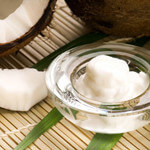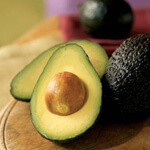 The robust and abundant cabbage, which is closely related to other leafy green vegetables like broccoli and cauliflower, has a long history as both a food and medicine. For example, the Ancient Greeks would routinely prescribe cabbage or cabbage juice to treat constipation or mushroom poisoning, while the Ancient Egyptians consumed cabbage before meals to lower the intoxicating effects of wine. The British even brought cabbage to the trenches of World War I, since its leaves helped to treat trench foot and bandage ulcers.
The robust and abundant cabbage, which is closely related to other leafy green vegetables like broccoli and cauliflower, has a long history as both a food and medicine. For example, the Ancient Greeks would routinely prescribe cabbage or cabbage juice to treat constipation or mushroom poisoning, while the Ancient Egyptians consumed cabbage before meals to lower the intoxicating effects of wine. The British even brought cabbage to the trenches of World War I, since its leaves helped to treat trench foot and bandage ulcers.
Cabbage’s historical uses as a medicine is a testament to its dense concentrations of nutrients. In fact, cabbage shares a remarkably similar nutritional profile to broccoli, and is even proven to treat the same medical conditions.
List of Health Benefits
Rich in disease-fighting compounds – All cabbages, including white cabbages (which are the most commonly eaten cabbages in the United States), contain high concentrations of disease-fighting phytonutrients such as polyphenols and glucosinolates. A study published in the Asian Pacific Journal of Cancer Prevention in 2013, for instance, found that “cabbage heads could contribute as sources of important antioxidant and anti-inflammatory related to the prevention of chronic diseases associated to oxidative stress, such as in cancer and coronary artery disease.” Of all the cabbages tested by the scientists, red cabbages contained the most antioxidants, while Chinese, Savoy, and green cabbages contained the strongest anti-inflammatory properties. These results suggest that varying the types of cabbage we consume will maximize our phytochemical intake.
Antidiabetic benefits – Research published in Evidence-Based Complementary and Alternative Medicine in September 2008 found that diabetic rats that were fed red cabbage extracts for 60 days exhibited reduced blood glucose levels, restored renal function, and improved weight loss when compared to the control group. The researchers ascribed these results to the cabbages’ antioxidant and antihyperglycemic properties, which “offer a potential therapeutic source for the treatment of diabetes.” However, cabbage is also a great source of fiber, which is known to prevent diabetes since it helps to slow the absorption of sugar.
Great source of vitamins C and K – Half a cup of cooked green cabbage supplies us with 47 percent of our recommended daily intake (RDI) of vitamin C and 102 percent of our RDI of vitamin K. Vitamin C is, of course, an essential antioxidant that provides our immune systems with their first lines of defense against invading pathogens. It is also good for the skin and hair, and prevents accelerated aging. Vitamin K, on the other hand, aids blood clotting and maintains bone health.
All leafy green vegetables contain these two vitamins, though some contain more than others. Broccoli and Brussels sprouts contain the most vitamin C, while kale and spinach are the undisputed kings of vitamin K. Cabbage contains moderate amounts (i.e. maintenance doses) of both.
Weight loss properties – Cabbage excels in all the areas expected of a weight loss food. It is low in calories and carbohydrates, contains no fat, is low on the glycemic index, and is high in fiber. Moreover, cabbage is highly versatile and can be incorporated into stews, soups, and countless cooked dishes.
Choosing the Best Cabbages
According to the World’s Healthiest Foods website, sauteing cabbages helps to retain the most nutrients, though steaming and boiling them are also good choices. Regardless of how we choose to prepare cabbage, however, we must ensure that it is organic. Since cabbage heads are not protected by shells or skins, they are fully exposed to pesticides and herbicides. Moreover, cabbages are notoriously susceptible to mineral deficiencies stemming from poor soil quality. Consequently, organic farms – which tend to contain the healthiest soil – usually produce the tastiest and most nutritious cabbages.






